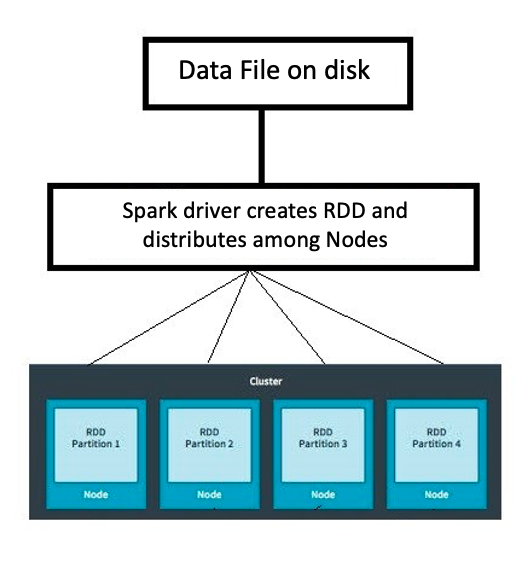Introduction to PySpark RDD
Big Data Fundamentals with PySpark

Upendra Devisetty
Science Analyst, CyVerse
What is RDD?
- RDD = Resilient Distributed Datasets

Decomposing RDDs
Resilient Distributed Datasets
Resilient: Ability to withstand failures
Distributed: Spanning across multiple machines
Datasets: Collection of partitioned data e.g, Arrays, Tables, Tuples etc.,
Creating RDDs. How to do it?
Parallelizing an existing collection of objects
External datasets:
Files in HDFS
Objects in Amazon S3 bucket
lines in a text file
From existing RDDs
Parallelized collection (parallelizing)
parallelize()for creating RDDs from python lists
numRDD = sc.parallelize([1,2,3,4])
helloRDD = sc.parallelize("Hello world")
type(helloRDD)
<class 'pyspark.rdd.PipelinedRDD'>
From external datasets
textFile()for creating RDDs from external datasets
fileRDD = sc.textFile("README.md")
type(fileRDD)
<class 'pyspark.rdd.PipelinedRDD'>
Understanding Partitioning in PySpark
A partition is a logical division of a large distributed data set
parallelize()method
numRDD = sc.parallelize(range(10), minPartitions = 6)
textFile()method
fileRDD = sc.textFile("README.md", minPartitions = 6)
- The number of partitions in an RDD can be found by using
getNumPartitions()method
Let's practice
Big Data Fundamentals with PySpark

